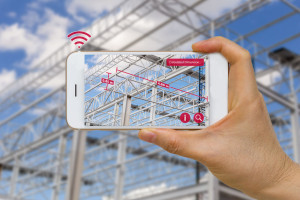 There has been a growing interest in incorporating smart technology into infrastructure design and construction in recent years. The concept of smart infrastructure involves the integration of technology and data analytics to improve the functionality, safety and sustainability of infrastructure. While there are certainly opportunities associated with incorporating smart technology into infrastructure design and construction, several challenges must be addressed.
There has been a growing interest in incorporating smart technology into infrastructure design and construction in recent years. The concept of smart infrastructure involves the integration of technology and data analytics to improve the functionality, safety and sustainability of infrastructure. While there are certainly opportunities associated with incorporating smart technology into infrastructure design and construction, several challenges must be addressed.
One of the primary opportunities associated with incorporating smart technology into infrastructure design and construction is improved functionality. By integrating sensors, data analytics and other advanced technologies, infrastructure can be designed to operate more efficiently and effectively. For example, smart traffic management systems can use real-time data to optimize traffic flow and reduce congestion, improving safety and reducing commuter travel times. Similarly, smart lighting systems can adjust lighting levels based on occupancy, reducing energy consumption and enhancing safety.
Another opportunity associated with smart technology in infrastructure is increased safety. By incorporating sensors and other advanced technologies, infrastructure can be designed to detect potential hazards and take corrective action. For example, smart bridges can use sensors to detect signs of structural damage and alert authorities to potential safety risks. Similarly, smart traffic management systems can alert drivers to hazards such as icy roads or accidents.
Smart infrastructure can also help to improve sustainability. By using data analytics and other advanced technologies, infrastructure can be designed to reduce energy consumption and environmental impact. Smart buildings can use sensors to optimize heating and cooling systems based on occupancy, reducing energy consumption and greenhouse gas emissions. Similarly, smart transportation systems can reduce congestion and promote public transportation, which might help reduce the number of vehicles on the road and the associated emissions.
Despite the many opportunities associated with incorporating smart technology into infrastructure design and construction, several challenges must be addressed. One of the primary challenges is the cost of implementing smart technology. Incorporating sensors, data analytics and other advanced technologies into infrastructure can be expensive, and it may be difficult for governments and other stakeholders to justify the expense.
Another challenge is the complexity of integrating smart technology into existing infrastructure. Many existing infrastructure systems were not designed with smart technology in mind, and retrofitting these systems to incorporate advanced technologies can be challenging. This requires careful planning and coordination to ensure that the integration is successful.
Data privacy and security are also significant concerns regarding smart infrastructure. As more infrastructure systems become connected, the potential for cyber attacks increases. This poses a substantial risk to public safety and highlights the importance of ensuring adequate cybersecurity measures are in place to protect against attacks.
One way to address these challenges is through collaboration between government, industry and academic stakeholders. By working together, stakeholders can share expertise, resources and funding to develop and implement smart infrastructure solutions. This collaboration can also help address the cost issue by pooling resources and expertise to create cost-effective solutions.
Another way to address the challenges of incorporating smart technology into infrastructure design and construction is through pilot projects. Pilot projects allow stakeholders to test and refine new technologies and solutions on a smaller scale before implementing them on a larger scale. This can help to identify potential challenges and issues before they become more significant and costly.
To ensure that smart infrastructure is successful, engaging with the public and other stakeholders throughout the design and construction process is important. This can help to ensure that the solutions being developed meet the community’s needs and that stakeholders are aware of the benefits and risks associated with smart infrastructure.
Incorporating smart technology into infrastructure design and construction presents many opportunities for improved functionality, safety and sustainability. However, significant challenges are associated with integrating advanced technologies into existing infrastructure systems. To address these challenges, stakeholders must work together to develop cost-effective solutions, engage with the public and stakeholders throughout the design and construction process, and prioritize data privacy and security. By addressing these challenges, smart infrastructure has the potential to transform the way we live and work, improving the quality of life for citizens and promoting economic growth and development.
One area where smart technology is already being incorporated into infrastructure design and construction is the development of smart cities. Smart cities use data analytics and other advanced technologies to improve the efficiency and effectiveness of urban systems, such as transportation, energy and public safety. For example, smart city initiatives may involve using sensors and data analytics to optimize traffic flow, reduce building energy consumption, or monitor air quality.
Another area where smart technology is being used in infrastructure design and construction is sustainable infrastructure development. Sustainable infrastructure involves designing and building infrastructure systems that minimize environmental impact and promote sustainable development. Smart technology can optimize energy use, reduce waste and encourage sustainable transportation systems, among other things.
Overall, incorporating smart technology into infrastructure design and construction presents challenges and opportunities. While there are certainly challenges associated with integrating advanced technologies into existing infrastructure systems, there are also significant opportunities to improve the functionality, safety and sustainability of infrastructure. By working together to address these challenges and capitalize on the opportunities presented by smart technology, stakeholders can help to create a more efficient, sustainable and resilient infrastructure system for the future.
McNeil Engineering has grown and evolved with new technology for over 30 years. We hope you will contact us with any new projects so that we can grow together with new smart technology.








